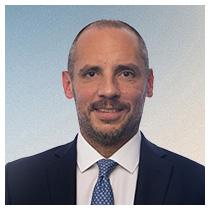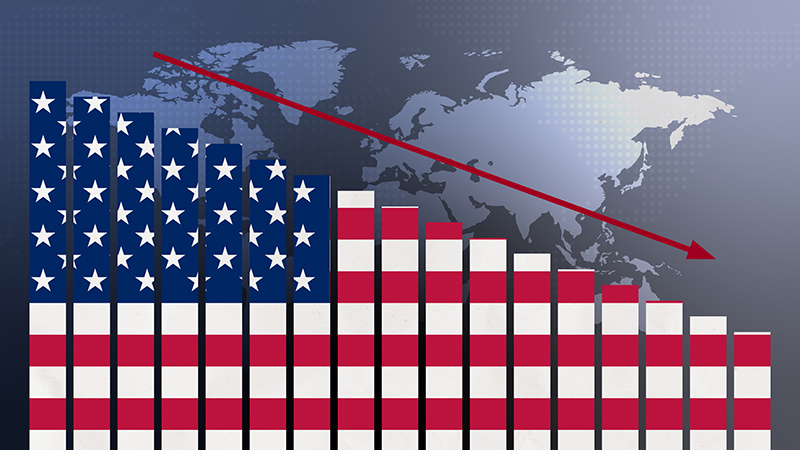In the latest in our regular series, Portfolio Adviser hears from Clive Selman, international head of sales at Federated Hermes (pictured below)
Which particular asset classes and strategies do you anticipate your intermediary clients focusing on in 2025?

A combination of market uncertainty and high interest rates has led to record inflows into Money Markets over the past few years. With further rates cuts on the horizon, one of the major trends we are expecting is investors moving out of cash and lower risk investments. This presents opportunities for managers with the right fixed income strategies that allow clients to increase duration.
Rate drops will also encourage growthier asset classes, like equities, and in particular, Emerging Markets, where valuations are attractive relative to certain developed markets. I believe we’re also likely to see a broadening out of US equities, from the large cap tech stocks into the small and mid-cap market.
Finally, I think we will begin to see a shift back into more sustainable thematic strategies as valuations start to look more attractive.
Should end-investors – and, by association, asset managers – be thinking beyond equity and bond investments? Towards what?
This depends entirely on who the end investor is, but we are already seeing some groups starting to look outside. The liquid alternative space and some areas of Private Markets are clearly attractive. However, whilst there has been a lot of discussion around evergreen and semi-liquid products in Private Markets, we have yet to see this really take-off and there remains a limited supply of available vehicles. Crucially, there remains a liquidity mismatch that is difficult to resolve.
To what extent do private assets and markets fit into your thinking? What are the currents pros and cons for investors?
We are actively looking at our Private Markets capabilities and the viability of bringing them to a broader audience of investors who are looking for diversification, an illiquidity premium and broadening of their portfolio. However, the aforementioned liquidity mismatch is a significant barrier; it is hard to see how the returns that institutional clients in long-dated locked-up vehicles can be replicated for the wholesale and retail markets whilst offering the liquidity that they would require.
Given client and regulatory pressure on charges, how is your business delivering value for money to intermediaries and end-clients?
There will always be a trade-off between cost and value, but my view is that cheap doesn’t necessarily mean good. In our world, it’s all about the value delivered around the price you offer. And that doesn’t simply mean returns, it is the entire client servicing process, from reporting to the quality of content delivered, along with other ancillary benefits. Consolidation in the market as a result of these price pressures has also lead to a move away from traditional selling to the creation of partnership models ,because it’s no longer a competition on price alone.
How much of your distribution is currently oriented towards climate change, net zero, biodiversity and other segments of sustainable investing? How do you see this approach to investing evolving?
ESG is integrated across our entire business at all levels. Within our range of investment products, we have three classifications: Active ESG, Sustainable and Impact. There is a rapidly increasing interest in all of these areas, but we are seeing a particular spike in interest in Sustainable.
For investment areas like climate change, we are seeing a very gradual shift from the more traditional ESG integration strategies. However, clients in this category remain in segregated mandates. We believe there’s a huge growth opportunity within climate change over the long-term, and subsequently we think it’s a huge positive for us to have these capabilities, so that we have the track record when it spills into the mainstream.
How are you now balancing face-to-face and virtual distribution? In a similar vein, how are you balancing working from home and in the office?
I don’t think we’ve gone back to where we were from a face-to-face perspective, but certainly for new business the expectation is that it is face-to-face. For some existing relationships, it is now more acceptable to provide virtual updates, but in a relationship-focused industry, face-to-face interactions are fundamental to the client experience.
With regards to working from home, I take a similar view and do four days a week in the office. I enjoy being around people and believe the value gained from being physically present and interacting with regards to building a positive company culture and fostering a healthy working environment is immeasurable.
What do you do outside of work?
All of my children are keen athletes and I like to be as involved with that as I can – I’m currently coaching my son’s rugby team and love being a part of that. I also like to fill my time with live experiences, whether that’s music or sports events, I enjoy being able to appreciate the here and now.
What is the most extraordinary thing you have seen in your life?
I’ve been privileged enough to travel around the world, both for work and leisure, and this has given me the opportunity to see some truly extraordinary places. However, the one that stands out for me is Jerusalem. It has a spiritual magnetism that is unrivalled and its interlacing histories, tapestry of cultures and the magnificence of its historical legacy for me made it an unforgettable and unparalleled experience.
Looking a little further ahead, in what ways do you see the asset management sector evolving over the next few years?
I think the immediate outlook for this industry is further consolidation and greater regulation, both of which will have their positive and negative outcomes. I think we will also see continued movement towards client-centric solutions being created, rather than the model of building and selling traditional investment products.











